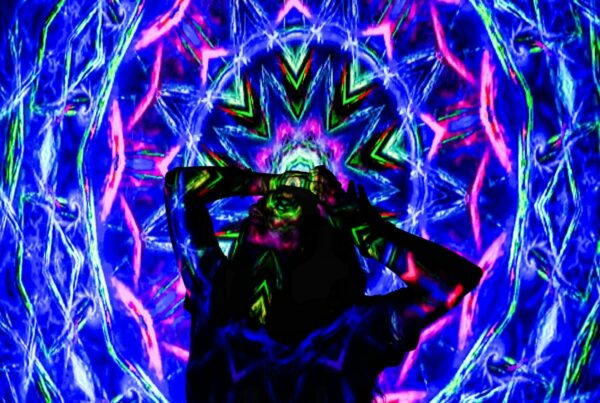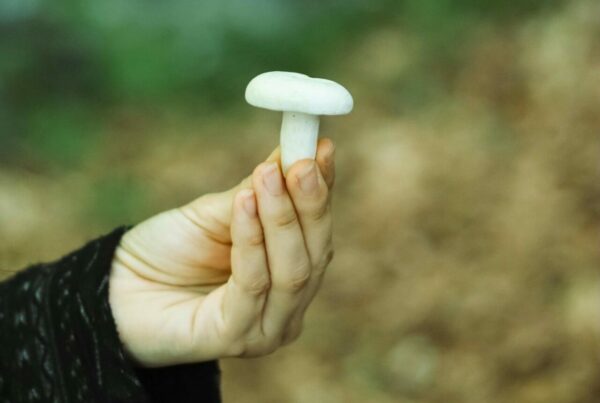Alzheimer’s Disease (AD) is a distressing neurodegenerative condition that currently has no known cure. The increasing number of people affected by this disorder presents a substantial challenge. Researchers are investigating better treatment approaches by assessing both natural and artificial alternatives.
Different clinical trials have highlighted the promising potential of serotonergic psychedelics, such as LSD, DMT, and psilocybin, in the treatment of Alzheimer’s disease. For additional intriguing information, explore online resources or consider the option of “purchasing psychedelics online in Canada.”
[toc]
The Function of Psychedelics in Alzheimer’s Treatment
Conventional psychedelics demonstrate potential in treating early-stage Alzheimer’s Disease (AD) or mild cognitive impairment (MCI) by encouraging the development of new brain cells.
Psychedelics might promote neural plasticity for learning and memory by focusing on specific brain receptors. This might help in slowing down or even reversing the neurodegenerative effects of AD. Furthermore, psychedelics could potentially reduce depression and anxiety, commonly seen in AD patients, by inducing positive psychological impacts.
There are still uncertainties about the workings of psychedelic therapies. Some suggest that the profound effects experienced from high-dose psychedelics, such as mystical sensations or a sense of self-dissolution, are essential to gain psychological benefits. Others believe that the key lies in the biological changes triggered by these substances. Both viewpoints may have merit.
Traditional psychedelics appear to aid the brain in adapting and reducing inflammation, even at smaller doses. Therefore, low-dose treatments could potentially help conditions like brain degeneration or migraines without significant mind-altering impacts. However, for depression, anxiety, or addiction, the mind-altering effects seem essential, leading to introspection and behavioural changes. Hence, both low and high doses should be investigated for personalized therapy.
The Impact of Serotonergic Psychedelics
Serotonergic psychedelics, including LSD (lysergic acid diethylamide), DMT (dimethyltryptamine), and psilocybin (contained in magic mushrooms), are gaining attention.
Potential therapeutic benefits for various mental health disorders have sparked a growing interest.
Conditions and treatment approaches are under investigation.
Specialists propose that serotonin receptors, recognized for their cognition enhancement and neuroplasticity modulation capabilities, offer a promising focus for Alzheimer’s Disease (AD) research.
These substances primarily exert their pharmacological effects by modifying the serotonin system in the brain, leading to alterations in perception, mood, and consciousness. Supportive findings from several studies for this concept are as follows:
- In particular, the 5-HT2A subtype of the receptors affects the gene expression of neuroplasticity-improving neurotrophins in brain areas impacted by AD.
- These receptors control cortical signaling, essential for cognition, memory, and synaptic plasticity.
- Serotonin receptors, despite their unique distribution within neurons, play a role in neural development, regeneration, and plasticity.
Significant Research Findings
- Serotonergic psychedelics show potential in alleviating some aspects of AD pathology by promoting neuroplasticity.
- Classic psychedelics impact neurotransmission, facilitate synaptic remodeling, and boost factors that aid neuronal survival.
- Specific psychedelics, for example, muscimol and Sig-1R agonists, could reduce the neurotoxicity associated with AD progression.
- Classic psychedelics activate pathways in brain areas affected by AD, implying potential for slowing or reversing brain degeneration.
- Psilocybin mushrooms stimulate neural plasticity to facilitate neurogenesis and induce lasting changes in brain circuits.
- Psychedelics improve brain connectivity by targeting receptor genes and initiating changes in neurons and networks.
Clinical studies suggest that both classic and non-classic psychedelics from magic mushrooms affect multiple biological processes in the brain. These effects encompass rapid changes in gene expression and considerable alterations in brain structure and function.
Interacting with receptors like serotonin, sigma, NMDA, and GABA, these psychedelics can enhance synaptic plasticity and rejuvenate the brain. Consequently, psychedelics may have a positive influence on behaviour, memory, and cognition, positioning them as promising treatment options for AD and similar disorders.
Buy Psychedelics Online in Canada
Welcome to our online store, your reliable source for a broad selection of psychedelic products in British Columbia, Canada. If you’re considering starting microdosing with magic mushrooms, we’re a trusted medicinal mushroom dispensary that can guide your journey.
- LSD
LSD, a synthetic drug, derives from a fungus called ergot that grows on rye grains. This psychoactive compound, even in small amounts, can modify perceptions, emotions, and thoughts.
Excessive consumption of LSD can lead to severe hallucinations, distorting your sense of time and space. Be cautious, as substances marketed as LSD might be other drugs like NBOMe or part of the 2C drug family.
| Product | Kittease – Ketamine Microdose Troche (30x50mg) | Zenly – LSD Gel Tabs – 600ug (100ug Per Tab) | Zenly – LSD Gummies – Sour Zen Berry – 200ug (100ug Per Gummy) |
| Purpose | For stress, depression, pain control, PTSD, OCD, work-related stress, performance anxiety, insomnia, and addiction. | For unique experiences | For unique experiences |
| Dosage | 50mg per troche / 30 per pack – 1.5 grams of ketamine/ per pack | 600ug total/6 Tabs (100ug/Tab) | 200ug total/2 Gummies (100ug/Gummy) |
| How to Use | Consume one full troche | Take one complete tab for the full effect. Wait at least 2 hours before taking another. | Have one complete gummy for the full effect. Wait at least 2 hours before consuming another. |
| Benefits | Quick-acting with minimal risk, enhanced openness, ideal for introspection and cognitive improvement. | Accurately measured dose for the perfect trip, lab-confirmed | Accurately measured dose for the perfect trip, lab-confirmed |
- Magic Mushrooms
There are over 180 mushroom species known to possess psilocybin and psilocin, substances renowned for their therapeutic benefits and positive impact. on mental health.
The intensity of effects can differ depending on the type of mushroom, the particular cultivation batch, the amount consumed, and the individual’s tolerance. Some people opt for microdosing to experience milder effects, while others ingest larger amounts for a more intense experience. The quality may also differ based on the cultivation techniques used.
Blue Meanies, scientifically known as Panaeolus cyanescens, are small dried fungi that flourish in warm, tropical environments, typically on cow and water buffalo dung. As they grow, they develop blue spots on their surface, which is where their name comes from.
- These fungi contain high concentrations of psilocybin and psilocin.
- There’s a history of recreational use, especially among the Balinese, who eat them during celebrations and for artistic inspiration.
- They are popular with tourists and travelers in Bali and similar places due to their hallucinogenic effects. These effects can include feelings of euphoria, hallucinations, happiness, and intense laughter.
- DMT
DMT, a potent hallucinogenic substance, is found in certain plants such as Psychotria viridis and Chacruna. Often called the “spirit molecule,” these regulated substances can trigger deep psychedelic experiences. They offer a short, yet intensely immersive trip characterized by vivid visual and auditory hallucinations.
| Product | Dream Machine – Vape Cartridge – DMT 1ml | Integral Alchemist – ACACIA Changa Pre-Roll | Integral Alchemist – Mimosa- 1ml DMT Vape Cart |
| Description | Explore hyperdimensional realms with DMT. | Experience an effect akin to ayahuasca, blending a mix of herbs and DMT. | Embark on a journey filled with mystical visions and spiritual insights with DMT. |
| DMT Content | 1g | Approximately 90mg | 1ml |
| Instructions | Preheat the cartridge and inhale | Enjoy the pre-roll at a pace that suits you. | Draw in the vapor for instant effects. |
| Effects | Intense hallucinations, modified state of awareness. | Visual journey of psychedelia, prolonged duration. | Spiritual awakening, intense happiness, significant changes in viewpoint. |
| Duration | Varies per individual | Up to 1 hour | Up to 30 minutes |
Potential Long-Term Effects of Psychedelic Use
Contemporary studies aim to explore the enduring implications of utilizing psychoactive substances. The phrase “long-term effects” is used to describe any lasting alterations in cognitive function, mood, or memory following extended psychedelic use, an area where understanding is still developing.
The analysis of long-term effects of psychedelics is complex. Some studies suggest potential mental health benefits, while others point to potential risks, such as the onset of psychosis.
In spite of the intricacies, researchers persistently endeavor to understand the effects of long-term psychedelic use on mental health. They conduct rigorous studies, tracking individuals over long periods to collect more accurate data.
Purchase Cannabis from a Certified Provider
Research suggests a significant shift in Alzheimer’s disease treatment, implying that psychedelics could usher in a new era in the management of brain disorders. Experts propose that the therapeutic application of these substances could completely alter Alzheimer’s treatment, providing renewed optimism to numerous patients and their families.
For premium-quality products, opt for a certified provider such as Shrooms Online Canada. With a wide range of cannabis products available, including flowers, edibles, concentrates, and more, Shrooms Online Canada ensures genuine, lab-verified items that meet strict food and drug regulations.
Place your online order for shrooms today.
Frequently Asked Questions
How do psychedelics differ from other substances typically used in Alzheimer’s treatments?
Psychedelics distinguish themselves from traditional Alzheimer’s drugs through their treatment approach and effects. They stimulate the formation of new neural connections by targeting the brain’s serotonin system, fostering profound psychological experiences that enhance emotional wellbeing.
Unlike standard medications that primarily control symptoms, psychedelics are under evaluation by Health Canada for their long-lasting benefits and holistic treatment approach, which includes therapy.
Investigations into the use
The potential of psilocybin in managing conditions like obsessive-compulsive disorder, along with its safety record of not causing multi-organ failure, distinguishes it from conventional controlled substances.
Can psychedelic-assisted therapy be a viable treatment for Alzheimer’s patients dealing with end-of-life distress?
Psychedelic-assisted therapy might offer benefits to Alzheimer’s patients who are critically ill and confronting the reality of their mortality.
- Offers emotional respite. This therapy has been known to help relieve anxiety and sadness in some individuals, especially those severely ill. It could potentially be beneficial for Alzheimer’s patients as well.
- Generally safe when supervised. In a controlled setting, under professional supervision, the use of psychedelics is usually harmless and most individuals tolerate it well.
- Possibly improves quality of life. For an Alzheimer’s patient, a boost in mood can make a significant difference, despite no improvement in memory conditions.
- Requires further research. Although this therapy seems promising, additional research is needed to verify its safety and effectiveness for Alzheimer’s patients, especially those in the last stages of their lives.
What is the length of a psychedelic therapy session for Alzheimer’s patients?
- Preparation Phase. This stage involves one or two sessions, each spanning 1 to 2 hours. These meetings aim to ready the patient for the upcoming experience, establish expectations, and develop trust with the therapist.
- Main Psychedelic Session. This crucial session, during which the patient consumes the psychedelic substance, usually lasts between 4 to 6 hours. The patient spends this time in a controlled setting, typically lying down with eye shades on, listening to music, and under the careful supervision of therapists.
- Integration Phase. After the session, follow-up meetings are held to help the patient understand and incorporate their experience. These meetings generally last 1 to 2 hours each, with the number of sessions varying.
You may also be interested in:





